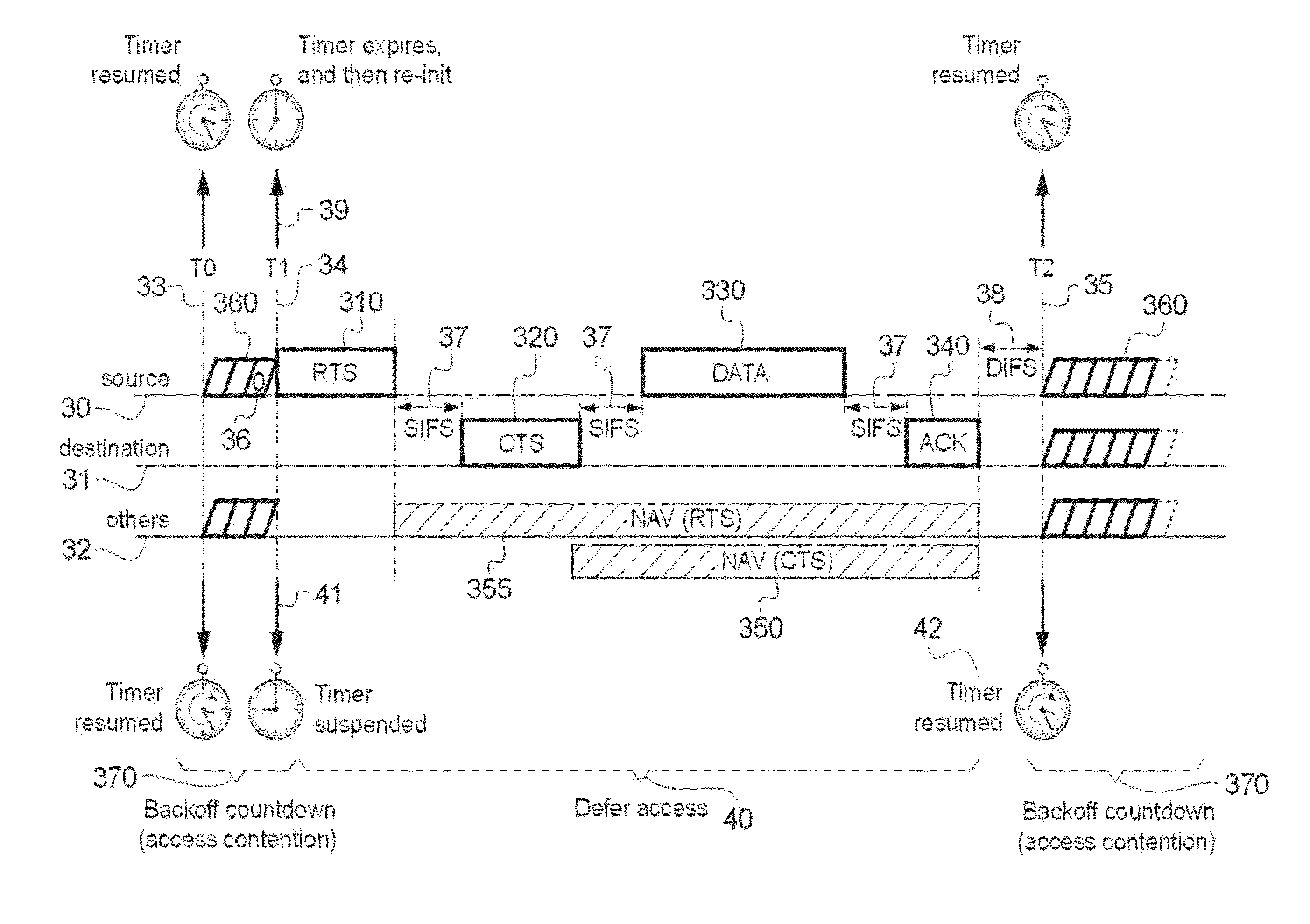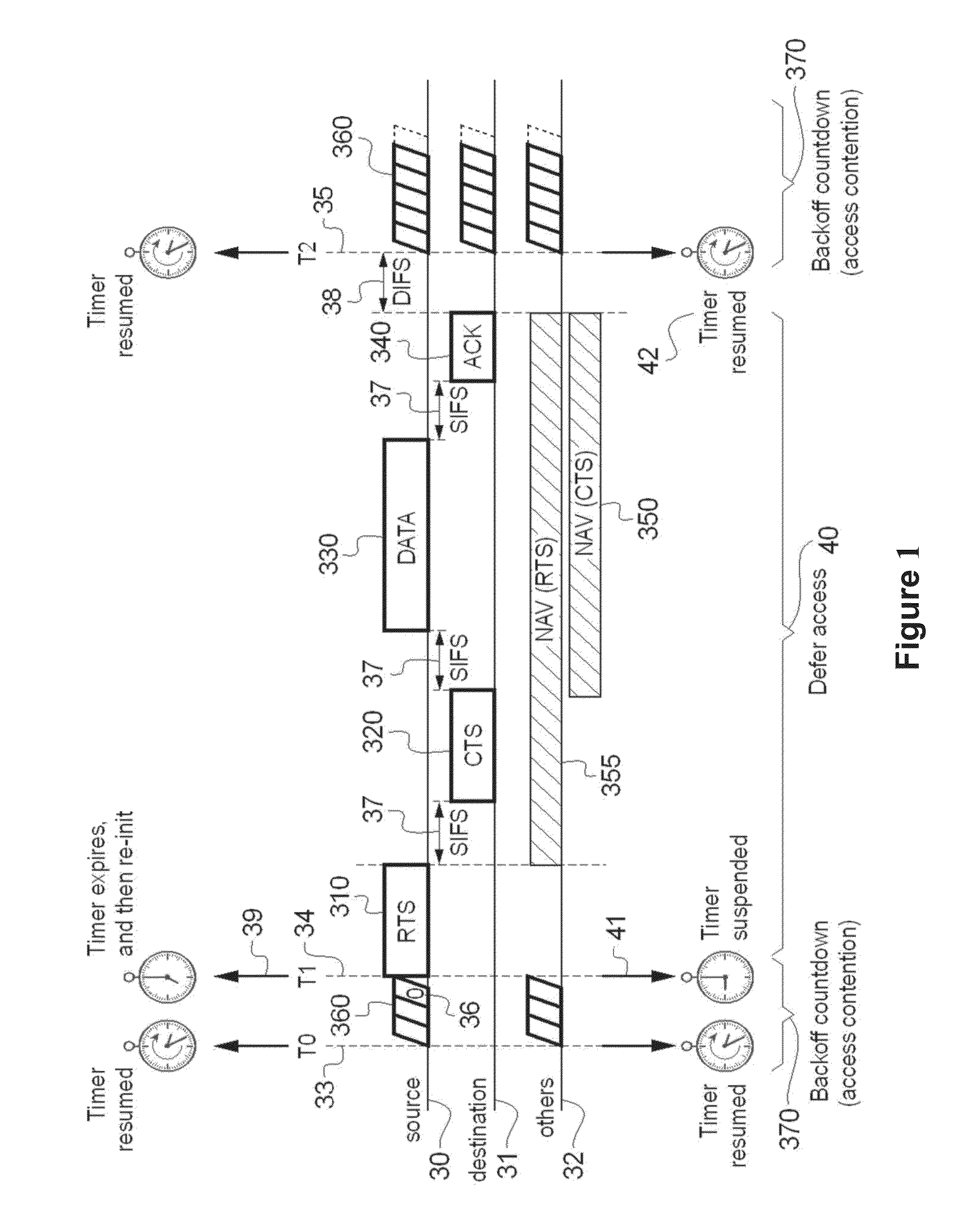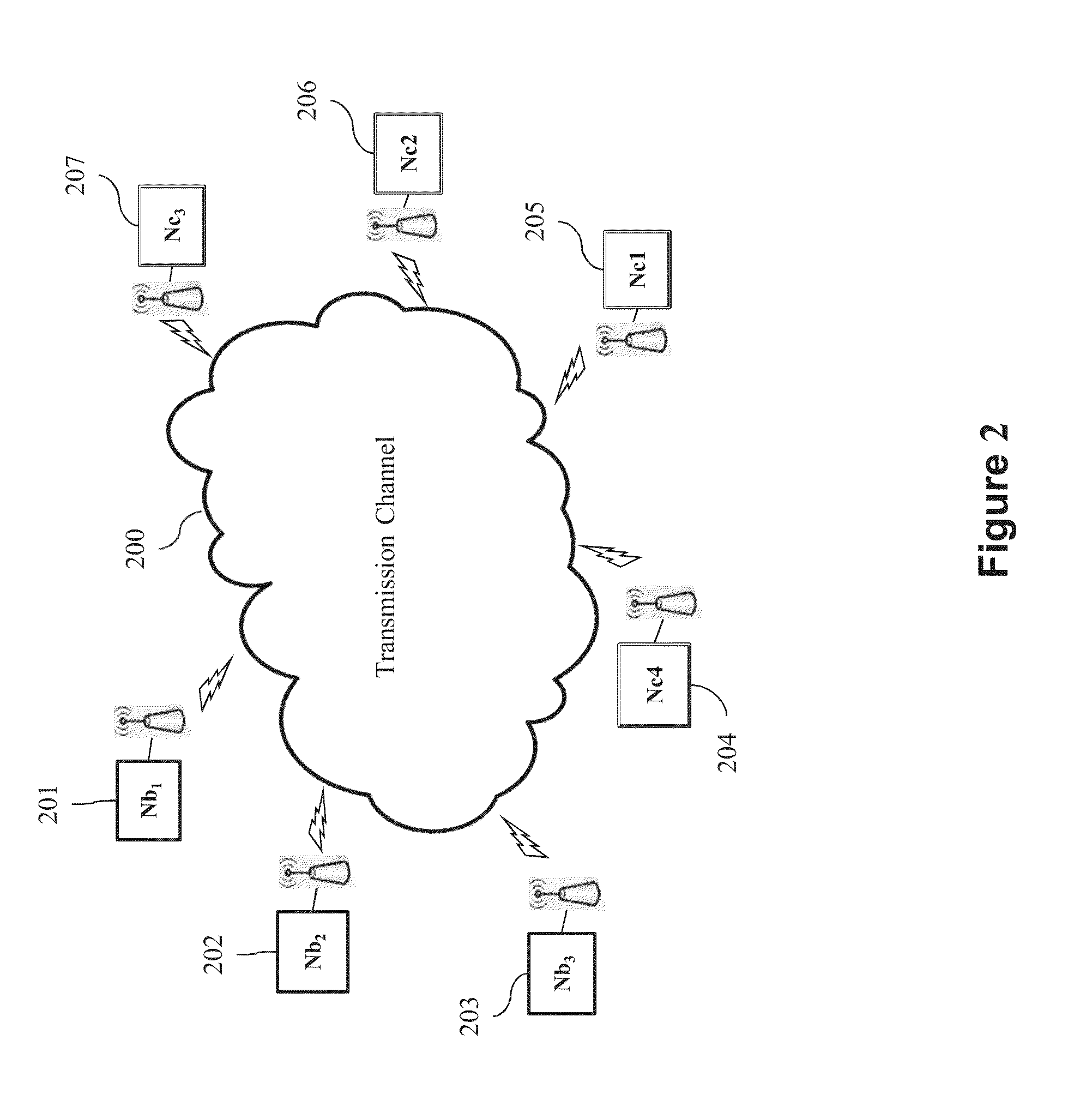Wireless data exchange in a network comprising collaborative nodes
a collaborative node and data exchange technology, applied in the field of wireless communication networks, can solve the problems of unnecessarily transmitting the entire packet, corrupting the data, and adding overhead to the device's functioning, so as to improve the ability to communicate and minimize overhead
- Summary
- Abstract
- Description
- Claims
- Application Information
AI Technical Summary
Benefits of technology
Problems solved by technology
Method used
Image
Examples
Embodiment Construction
[0040]FIG. 1 depicts a standard access mechanism, facilitating access to a wireless medium for a node. The back-off procedure is one of the first processes to be implemented.
The figure illustrates the behavior of three groups of stations: source node 30, destination node 31 and other nodes 32.
Upon starting the back-off process prior to transmitting data, a station e.g. source node 30 initializes its back-off time counter to a ‘random value’ as explained above. The back-off time counter is decremented once every time slot 360 interval for so long as the channel is sensed idle (count down is starting from T0, 33 as shown in FIG. 1), ‘frozen’ or suspended when a transmission is detected on the channel (count down is stopping at T1, 34 as shown in FIG. 1), and reactivated when the channel is sensed idle again (as example at T2, 35 as shown in FIG. 1). When its back-off time counter reaches zero 36, the timer expires and then reinitializes 39. The station 30 transmits a data message, e.g...
PUM
 Login to View More
Login to View More Abstract
Description
Claims
Application Information
 Login to View More
Login to View More - R&D
- Intellectual Property
- Life Sciences
- Materials
- Tech Scout
- Unparalleled Data Quality
- Higher Quality Content
- 60% Fewer Hallucinations
Browse by: Latest US Patents, China's latest patents, Technical Efficacy Thesaurus, Application Domain, Technology Topic, Popular Technical Reports.
© 2025 PatSnap. All rights reserved.Legal|Privacy policy|Modern Slavery Act Transparency Statement|Sitemap|About US| Contact US: help@patsnap.com



